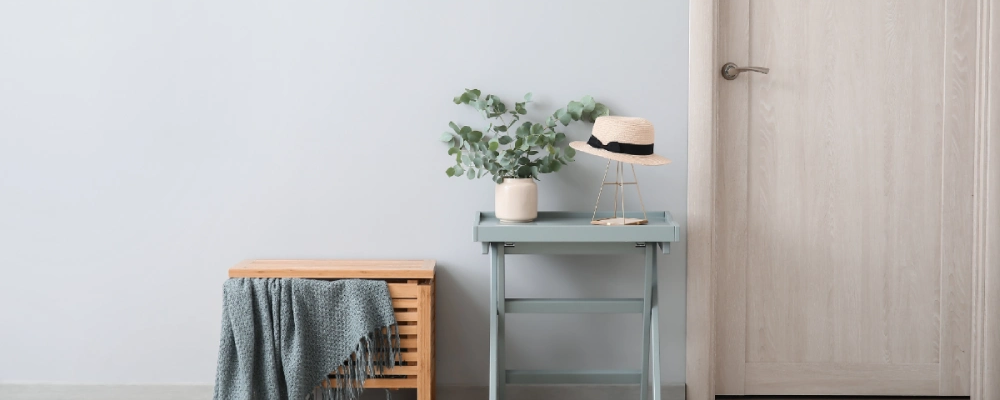If you want to add a dramatic texture to your wall or want to do a makeover, then textured walls help you to achieve the look. Textured walls add simplicity, elegance, luxury, and create calmness in the hall.
Wall textures in halls can enhance the mood and help to create a serene environment. Your guests will be stunned by incorporating some of the patterns mentioned below. Read this blog to understand more about textured wall designs.
Types of Textured Walls
Stone Finish Textured Wall
A stone is a strong material that is used for the building. Surprisingly stone is used in interiors as well. If you are someone who loves a rustic touch and sensibility, then stone finish textures are your go-to style. Stone is a long-lasting material that is also durable and gives great visuality.
The type of stone you choose depends on your budget and the finished look you desire. Stones like limestone, marble, sandstone, slate, and granite can be good choices.
Mirrors for the Jazz in You
Mirrors are the best way to elevate your home’s empty spaces. A simple wall looks extremely luxurious just by adding mirrors to it. They are bright, modern, and sleek. They are another interior style to look out for.
Wood Textures
Wood textured walls in the hall represent exquisite design. A wooden wall is a simple solution that can replace wallpaper and paint. This extends its life and reduces maintenance time. Wooden textured walls add warmth and deepen the room. They are natural and give a pleasing environment.
You can use wood from trees like oak, maple, walnut, cherry, pine, or cedar for this design. You can also use plywood or reclaimed wood to make these designs.
Gold and Grey Texture Paint Designs
Gold is an elegant colour and can be mixed with a lot of tones to provide dimensions and enhance the look. A gold and grey texture to the assessment wall in your hall or foyer is a great pick. It brightens the room. However, choose a careful pattern for your living room.

White Textured Walls
White textured walls are classy and give a rustic feeling to your home. Incorporate a simple design that looks natural and blends perfectly with your wall. You could replicate this look by applying thicker and thinner coats of wall putties and using your hand to achieve this look below.
Soft Wall Texture Paint Design
Looking for playful colours that also give luxury? Then soft wall painting is your go-to textured design. Using jewel tones, pastel colours, along with velvet textures creates a cosy and welcoming ambience. The soft waves add sophistication and make the hall a comfortable place filled with elegance and charm.

Cracked and Peeling Textured Paint Designs
Another rustic textured pattern is the use of different tools and textures to create a crack-and-peel effect. If you have a pristine house and want to add a WOW factor, then create a drastic difference by incorporating this textured design. Do hire experts for this wall design.

Ocean-Inspired Textured Design
If you want to bring the salty breeze and the waves of serene coastal atmosphere to your home. Incorporate shades of green, blue, and sandy beige wave patterns to mimic the sea and also create a luxury effect. These designs bring in a natural look and transform your simple hall into an oasis of beachfront. In hall areas, this creates an atmosphere of relaxation and rejuvenation.

Cooper Living Room Texture Design
Cooper living textured rooms are ideal for small spaces. They give luxury and a contemporary feel to the hall walls. Cooper hues are used in different patterns such as swirls, abstract designs, and geometric shapes create depth and sophistication. The warm tone reflects light and provides an elegant look to the living space. In short, it’s luxury and modernity.

Types of Textured Paint Design Techniques
Different types of textured painting techniques are used in interior design. Some of them are listed below:
Sponging
Sponging is a technique that creates soft patterns. When the paint is added to the sponge with the right hands, it can create a subtle but pleasing atmosphere in the room.
Stippling
Use a stippling brush and dab on the wall to create a textured effect. This technique helps to give the wall a rustic appearance.
Rag Rolling
After applying a coat of fresh paint, rolling a rag over the paint creates a texture that mimics suede or leather.
Dry Brushing
Dry brushing is a technique that focuses on highlighting the surface textures. When paint is applied to a dry brush and swept in the wall, it creates highlights.
Marbling
A marble finish on walls can be achieved by combining and layering different colours. When done properly, this produces an elegant and luxurious finish.
Crackling
Crackling patterns depict vintage styles. Using a special medium between the paint layers causes controlled crackling that gives the wall a weathered look.
Conclusion
In summary, textured and royal textured wall designs add beauty and luxury to the hall. There are infinite patterns and textures you can choose to incorporate in your house. Add a touch of personalisation to your textures and relax in a serene environment.
FAQs
In the living space orange peel, roughcast or metallic textured finish gives sophistication and adds depth to the wall. However, this is based on individual tastes and requirements.
Incorporating materials, namely bamboo, stone, and reclaimed wood, welcomes warmth and adds a touch of nature to the space.
The level 5 wall texture is the most luxurious and refined. This is the costliest wall texture because it creates a smooth finish and needs extra skill and labour.

